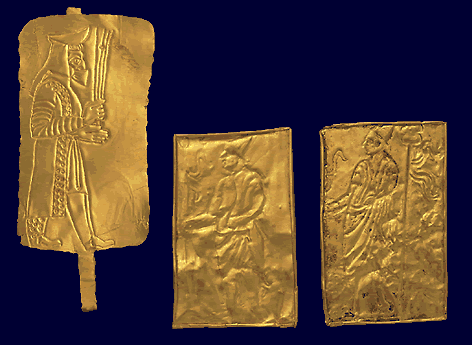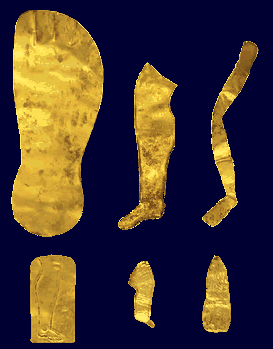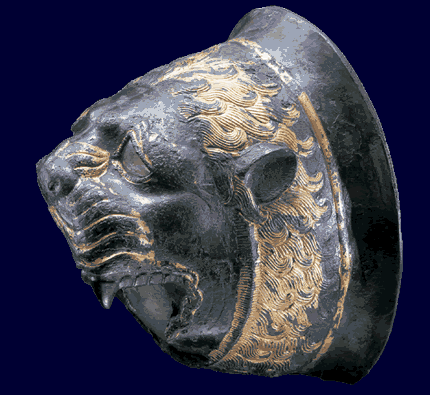| 7 |
Situla with Lion Head
|
| |
This situla in the shape of a lion’s
head is a drinking vessel that was used in West Asia from early on,
while features such as its curving mouth and tufts of bristled hair
bring together stylistic elements of the Mediterranean world. |
 |
| 8 |
Gold Offering Plaque |
| |
A Zoroastrian priest-engraved
upon this gold plaque—wears a Scythian or Bactrian robe,
a hood-like hat, and a mask and holds a bundle of barsoms. |
|
| 9 |
Gold Offering Plaques |
| |
An image of the Greek god,
Hermes, is pressed into these plaques. |
|
 |
 |
| 10 |
Figurine of a Priest |
| |
This is a statue of a Zoroastrian
priest, similar to Gold Offering Plaque no. 8. |
|
| 11 |
Gold Offering Plaques |
| |
These leg-shaped plaques are
thought to be connected to healing worship, prevalent in ancient
Greek culture. |
|
| Of the over three hundred object of art on
display, five stellar works have been generously loaned by the National
Museum of Antiquities of Tajikistan. |
 |
| 12 |
Shallow Bowl with Leaf Pattern |
| |
In ancient Hellenistic society,
the sycamore (genus name, Platanus) was a sacred tree of the
river gods. An actual sycamore leaf was gilded onto this silver
plate, which may have been offered to the gods of the Oxus River.
|
|
| Special Lecture |
|
A lecture, Ai Khanoum and a Greek City in Central Asia,
will be presented by Paul Bernard at 2:00 p.m. on July 31,
2002 in the Lecture South Hall of the Miho Museum. In 1965,
Dr. Bernard led a team of French archaeologists to excavate
the ancient Greek city of Ai Khanoum in Afghanistan and found
evidence of an early Bactrian kingdom.
|
|
|




